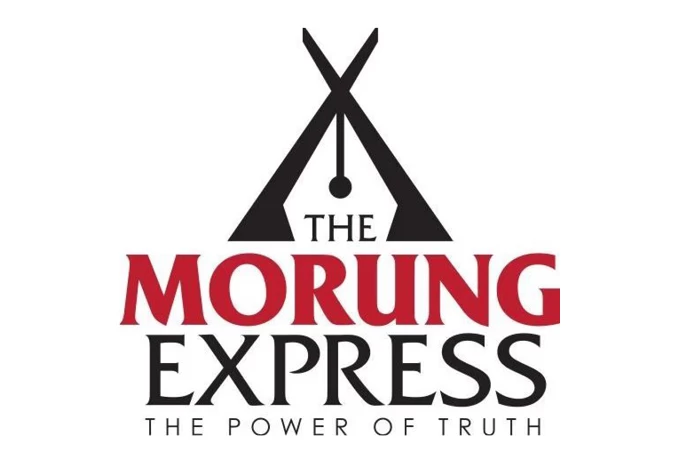
Ji Young
From Korea
From Korea
A day in a lifetime is like a drop of water in an ocean, but at times a particular day makes deep impression in our mind and lingers in our memory. We often recall such a pleasant day with joy and nostalgia.
Recently, I had the privilege to spend such a day at Kisama, the Naga heritage village which is about half an hour drive from Kohima. Kisama is a model village where all the 16 Naga tribes have their tribe house, every house depicting the typical traditions and cultures of each respective tribe. I learnt that Kisama is becoming more or less a meeting point of the Naga culture with outside world as most of the foreign tourists visit it.
What Kisama is terribly lacking in is the toilet facilities. The few toilets available there are disgustingly dirty with no proper water supply. Those who are looking after this place should take care of the sanitation part with great care and concern, keeping in mind that toilets are the mirrors of the greatness of an establishment.
It was a time of festivity with rallies of traditional games, cultural dances and display of colorful costumes. Apart from many features, one interesting item was the Naga wrestling. I found the Naga Wrestling is quite similar with the Korean Wrestling. The Naga Wrestling has much scope for development and promotion. Naga traditional costumes are very colourful and unique. Out of several dances, one dance called Unity Dance was quite heart touching. In the dance the various Naga tribes, each dressed in its own traditional fineries, came together hand in hand in long queue and danced together. Such exquisite hues blending into oneness was a message of brotherhood and peace the Nagas can take across the horizon.
I found that the Nagas are very fond of meat, music and merrymaking. I will call these three together as 3Ms. I found that in Nagaland in almost every occasion of festivity there are always an extravaganza of the 3Ms. That day at Kisama too, there was no dearth of the 3Ms. There was an endless supply of meat, specially pork and beef, at the feast. I am also very fond of food and tasting different cuisines. Though I am a Korean, I can relish any Naga cuisine, (except frog and dog meat).
A special sort of Angami dish I later came across was an item called MUODI which they had wrapped up in green leaves and distributed to us. I was told that ‘Muodi’ means ‘king-sized meat’, large chunks of pork and beef meat, which used to be cooked without water for about two hours. Each piece of muodi can be shared by three or four persons. Big chunk of cooked meat has a special taste and flavor.
I had no difficulty in intermingling with the Nagas who have very close affinity with the Koreans. I was wearing an Angami shawl they call “Lohe” and probably I did not look like a guest from a foreign country. In fact, I was told that many people asked my elderly companion and his two daughters whether I was also one of his daughters. The Nagas, being of Mongoloid stock, have a close affinity with the people of South East and Far East. The cultural occasion was graced by Her Royal Highness Princess Maha Chakri Sirindhorn of Thailand as Chief Guest. The organizers fully adorned the Princess with the Angami Naga traditional fineries, and she looked tremendously graceful, no different from any respectable Angami woman. The Chief Host of the occasion, Mr. Neiphiu Rio made a mention of India’s Look East Policy in his brief address to the congregation, and I found myself on the highway of Look East policy.
There at Kisama, I discovered that Nagaland is truly India’s Window to the East. I found that with the advantage of being a Mongoloid state, Nagaland can play great roles in promoting India’s Look East Policy in the years to come. I could visualize that better connectivity by roads and airways and development of international border trade centers are going to be very important infrastructures to promote the concept of Look East policy. The Look East policy is a good and timely program hammered out by the Government of India with great wisdom. Even then, unless Nagaland takes initiatives with its own innovations and with a strong will the Look East policy will take many years to see the dawn of day. Once the Look East policy is really materialized I see great future for the Nagas and North-Eastern people in particular and the people of India as a whole. I could imagine that the day may not be very far off when the South East and Far East may become the main thoroughfare for the Nagas in the realms of education, employment, and business.
As the program came to an end, the sun was about to set beyond the horizon. We began to feel the chill of the evening weather. It was time to bid adieu to Kisama. So we resigned cheerfully thinking that we had not spent our day in vain. At least I could allow my imaginations to travel without boundaries and got some insights about the Naga people. That was a day in a life time.
The day passed away like a summer brook, but Kisama’s memory lingers on. Kisama is becoming a nerve center today with people of all nationalities flocking there throughout the year. And Kisama beckons the Naga youth to dream and to imagine without boundaries. Once I too had a dream to come to India. People in Korea questioned about it. But now I am here and I am happy. If Naga youth dare to dream, I think they would come up with ideas which may define their future.



